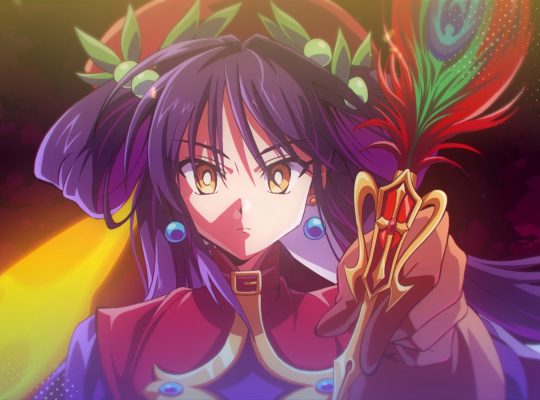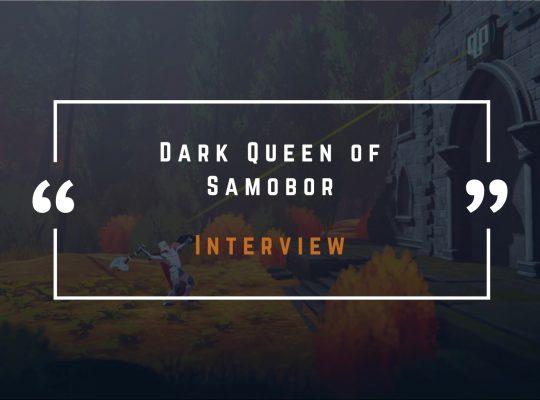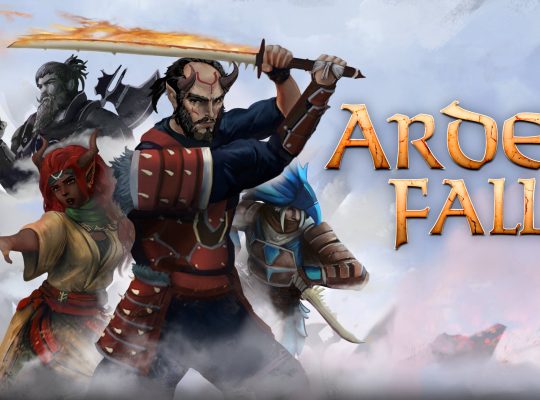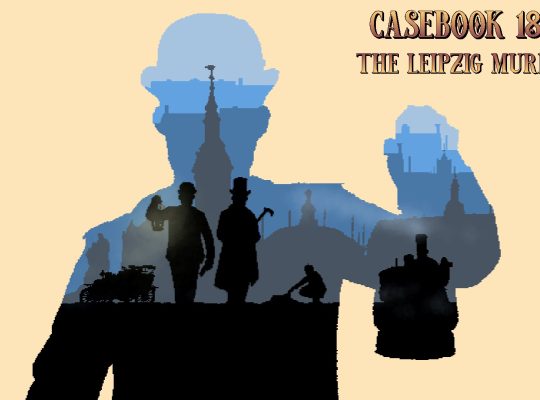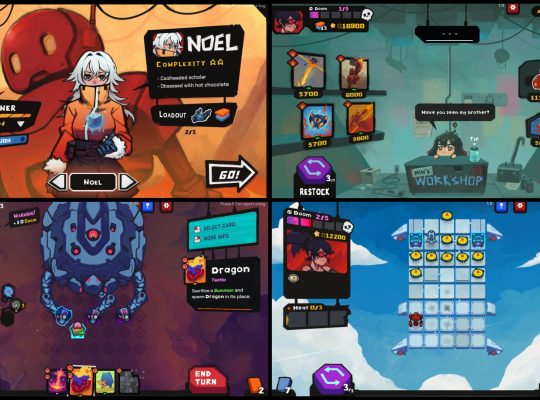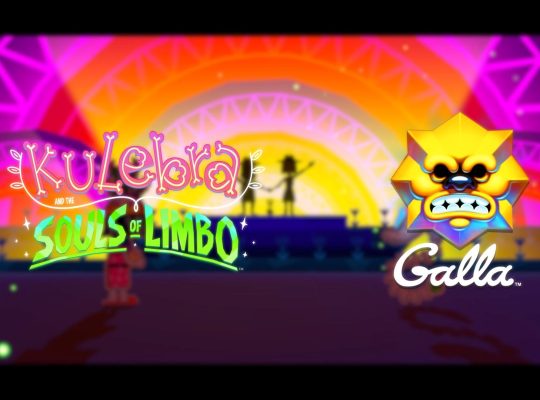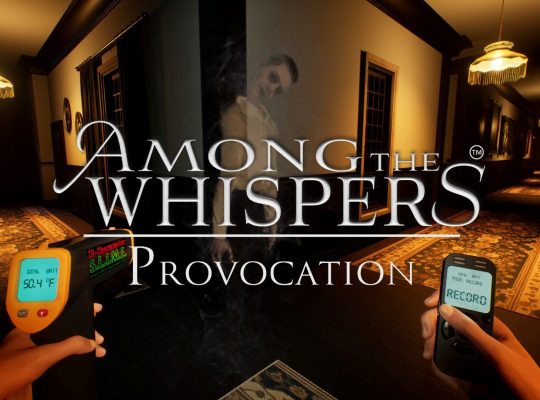Samantha and Kostia, a duo of developers from an Australian studio, have recently launched their narrative-driven adventure game centered on cats, titled Copycat. We had the opportunity to play the game several times, from the demo earlier this year to a full review now, and it’s clear that Copycat is a true indie accomplishment born from dedication and creativity.
They met eight years ago in Germany while working their first jobs in the industry. As a creative team, they worked on various projects together, including short films and a children’s book. But their shared love for video games eventually inspired them to take a leap into the gaming world with their project as Spoonful of Wonder.
Transitioning from advertising to video game development wasn’t easy. While learning new skills like coding and game writing came naturally to them, handling business-related tasks like accounting and securing funding was more challenging. They began working on Copycat as a hobby, but to take it seriously, they needed financial support. Fortunately, Screen Australia provided them with a development grant, allowing them to focus on bringing their vision to life.
Copycat is not just a game about cats; it’s a deep exploration of themes like home, belonging, and identity. The idea was born out of their experiences with cats and their reflections on what home truly means. The game follows a three-act narrative structure, delving into sensitive topics like adoption, loneliness, and abandonment, all viewed through the eyes of the main character, a cat named Dawn.
Spoonful Of Wonder, specifically Samantha, the creator of Copycat, answered our questions about her inspirations and motivations. We gained insight into the preparations, development, and release of this cat-focused experience.


First of all I have to ask: who is responsible for the humourous dialogue in this game? What was your secret to keep it sassy and funny, but also deeply emotional?
The concept of Copycat was a team effort, but the writing was primarily in my domain. Dawn is sassy, funny and fiery. She is hurt, and wholeheartedly believes forever home doesn’t exist. For Dawn, it’s easier to run away from home, than be adopted and rejected. Dawn comes to the conclusion she was never meant to be a pet, instead she belongs in the wild—and that’s where she will find her real family.
How did you come up with an idea to use wild cat documentaries as a tool to move the story forward?
Telling the three-act transformative narrative through the eyes of the silent protagonist required us to come up with solutions that would make the narrative flow while keeping the story accessible and enjoyable. This is where we decided to develop the nature documentary character to be the inner monologue of Dawn. In the beginning of the story, he was knowledgeable and reliable. But towards the end of the story, he became a bit more Stanley Parable-esque; guiding players when needed, then becoming their worst critic just moments later. It was so fun to write about his character. Our voice actor, David Molloy, did an excellent job bringing him to life.
Did you conduct any research of cat-related works of science or culture before making the game?
There are a plethora of cats-related works that we researched in preparation for Copycat. In the beginning of the game, Dawn explores her new home and gets into some mischief. Some works that we drew on for inspiration include ‘Aristocats’ (Disney, 1970), ‘The Secret Life of Pets’ (Universal Pictures, 2016) and the childrens book ‘Slinky Malinki’ (Dodd, 1990). Later in the game, when Dawn explores the outside world, we drew the charm of video game ‘Little Kitty Big City’ (Double Dagger Studio, 2024) and the wit of the childrens book ‘Scallywag’ (Rowe, 1990). We also read ‘A Street Cat Named Bob’ (Bowen, 2012) for an exploration of the pet owner bond – but more on that in the next question.
In the game you made a reference to A Street Cat Named Bob – was the game inspired in any way by this story (considering Bob’s owner has lived in Australia for some time)?
I very much enjoyed reading ‘A Street Cat Named Bob’ (Bowen, 2012) and ‘The World According to Bob’ (Bowen, 2015)! They really pulled the heartstrings. It was so wonderful to see the role a pet played in saving the author’s life. The book taught me not to underestimate the intelligence of a cat. It also showed a window into their intimate friendship. I was inspired to make Dawn and Olive’s friendship as special and nuanced as Bob and James’.




How did you manage to recreate cat’s behaviour and movement?
We had help from our talented animator called Radik Bilalov. He had a very good grasp on cat behaviour. We are lucky to have him on the team.
What allowed you to imagine cats’ thoughts? Do you believe cats can understand what we are saying to them?
Growing up, my sister and I had the opportunity to love seven cats. All of them were adopted from the shelter. Very early on, we gave each of the cats a personality and a voice—it was fun to imagine what they were thinking. We did the same process with Dawn! She was definitely the sassiest of the bunch. It is because she had such a rough time in her previous homes. By the time she meets Olive, she is a bit jaded and cynical. But slowly Olive opens up her heart to love. Answering the second half of your question, yeah I like to think cats understand what we say to them. It just depends if they are listening.
Are the events portrayed in Copycat based on or related to your personal experiences with owning a pet?
The joy of bringing a pet home for the very first time was such an important part of my childhood! All of my cats came from the pet shelter. So for the game, we wanted to give players an opportunity to walk in the paws of their newly adopted cat and experience the fear of adjusting to a new home. We spoke to many pet owners in the process to ensure the gameplay was correctly reflected and represented their varied experiences. One of the most important moments we worked on was the Adoption Form scene. We needed to make sure we were conveying the responsibility a pet owner has when they are adopting a new animal into their home. We received positive feedback from our community and that helped craft the writing and development of the scene.
We see both perspectives in the game – the cat’s and the owner’s. Copycat would still be a touching and significant story if it was told only from the animal’s side, however you decided to also show people’s struggles and regrets. Why?
90% of the game is played from Dawn’s point of view. Occasionally we would swap to another character to get a deeper insight into the scene. It was important for the story to show Olive’s struggles and her interpersonal drama. These cutaways were like a pallet cleaner for the story. We needed the audience to understand not everyone was mean to Dawn because they were evil, it’s because Olive and Mae were misunderstood. They had the best intentions and made the best decision in the moment. But sometimes those decisions had a negative impact on Dawn’s story. It added to the drama and tragedy nature of some of the plot points.




Players are presented with many choices during the playthrough – is it only about holding their attention, or does it also have anything to do with responsibility (a crucial theme in the game after all)?
Even though Copycat is a linear experience with a fixed ending, the choices exist for players to reflect their moral compass. It was also important that our character had agency. Dawn is in this world where she can’t control her choices, but the player can help her and guide her along the way. It makes her feel more in control while helping the protagonist empathise with her. Ultimately, Copycat is a poignant metaphor for the emotions we feel when we get left behind.
Copycat explores a lot of serious and even dark topics such as rejection and loneliness. At the end I’d like to ask: what is the most important message that you want to leave the players with after they finish the game?
We want players to turn to their partner, their friend, or their pet, and just give them a big hug! This is a moving game that breaks your heart then carefully puts back the pieces one-by-one. We want to leave players with a feeling of gratitude towards their pets. Pets are so special. They keep the loneliness away. Copycat pays an emotional homage to the ups and downs of finding where we belong and what home truly feels like.
Can we expect similar games from you in the future?
Copycat is our baby at the moment and we’re putting everything into making her strong and healthy. But yes, we do have an idea for our next project. Our dream is to continue making narrative-driven, animal-centric video games with beautiful graphics and a big heart. The next one will be underwater though!
How long has Copycat been in development and how much did the Screen Australia funding help you to breathe the life to this project?
We have been developing our debut game, Copycat’ for around three years now. But what turned this passion project into a reality was the support from Screen Australia. We are so grateful to the team: Amelia Laughlan, Chad Toprak and Lee Naimo. Funding has been instrumental in our development. It has elevated our game, provided a financial safety net, and given us a genuine industry jumpstart. Most importantly, it has allowed us to pay our collaborators for their time and creative energy, including our wonderful composer, voice-over actors, translators, coding contractors and audio engineer. We’re lucky Australia is so progressive and innovative when it comes to supporting games. We encourage all creatives to apply to Screen Australia to help shape future stories.



